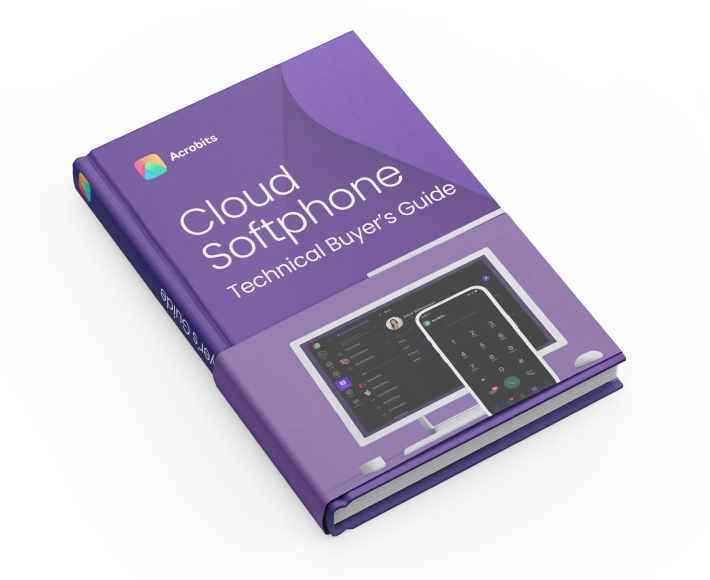How do you know whether your computer has a virus? Certain programs might run slowly. You might see strange applications installed that you don’t remember using. Or your system might fail entirely. Of course, you can just scan with an antivirus program to identify and possibly solve the problem.
But what happens if your business’s communication system has a data breach or other cybersecurity incident? Unfortunately, the procedure is a lot more complicated, and the stakes are certainly a lot higher.
VoIP systems are reliable ways to approach business-grade communication, whether they’re for call centers to talk to clients or for employees and management to talk amongst themselves. However, they aren’t immune to cyberattacks, just like any other software or service. VoIP phones themselves are just connected electronic devices that can become targets for malicious entities.
What is the nature of cyberattacks in VoIP platforms, and what can you do to identify issues so that they can be solved before they cause any damage?
What’s the Danger?
When hackers gain control of your Voice over Internet Protocol solution, they have access to your valuable communication data, which can include customer information, internal documents, and conference footage. This data can be used for fraud, extortion, or various other nefarious uses.

Specifically, VoIP attacks typically result in the following problems for victim businesses:
- Eavesdropping: Unencrypted communication is at risk of being breached. Hackers can record and store confidential information to sell to competitors or to use as blackmail.
- Spam over Internet Telephony: SPIT, or VoIP spam, allows attackers to harass victims by clogging up voicemail notifications and incoming call queues with automated spam.
- Phishing: Because VoIP allows you to modify your caller ID, it can be easy to instigate a phishing attack on your business to extract information or money.
- Phreaking: Phreaking is one of the earliest cybercrimes that reverse-engineered calling tones to make free long-distance calls. Now, phreaking refers to a broad category focusing on finding and exploiting vulnerabilities in modern telecommunications, ranging from legacy systems to VoIP infrastructure. PBX and PSTN infrastructure can often create a backdoor vulnerability into a connected VoIP system, allowing criminals to obtain sensitive information.
- Voice Over Misconfigured Internet Telephone (VOMIT): VOMIT is a specific tool and exploit that converts unencrypted IP voice calls into a standard WAV file. From there, the entire call can be listened to on-demand by anyone. VOMIT can also insert WAV files into a live phone call, which can be used for social engineering or simply cause confusion.
Where does this security risk come from? Some examples of where a VoIP platform might receive an attack include, but are not limited to:
- Public or shared networks: Private networks like those at home or in the office are generally secure, but issues pop up when you try to connect to a public or shared network. VoIP apps running through mobile devices are at risk when employees use them at coffee shops, airports, or other public locations.
- Network disruptions: Should your Internet service become unresponsive, then your VoIP phones will naturally become inoperable. Keep in mind, though, that some VoIP apps run on smartphones that have access to cellular networks. While some phones might be immune to network disruption, other company systems are still at risk.
- Poorly configured settings: Smart devices, routers, and other equipment often come with default passwords that are easy to guess or brute force. Make sure to change these settings as soon as you receive new equipment.
So how do you know when you’ve become a victim? Watch for the following signs of a cyberattack so that your company can protect itself against malicious actors while still enjoying the benefits of an efficient business-grade unified communication system.
4 Warning Signs of a VoIP Security Breach
Keep an eye out for these symptoms of a potential data breach or cybersecurity incident regarding your communication system.
1. Fake Antiviruses
The IT department should know which antivirus programs are in use at the company. It’s a common consequence of a malware infection that fake antivirus messages pop up randomly.
If you find yourself in this situation, get in touch with your VoIP service provider immediately and let your technical teams handle the system shutdown and subsequent cleansing of the communication system.
2. Microphone and Webcam Usage
VoIP platforms allow users to make phone and video calls through online conferencing solutions, which use your computer or smartphone’s camera and microphone. This feature allows for unparalleled flexibility, but keep in mind that webcam hacking is a common occurrence.
Corporate spying for the sake of collecting confidential or sensitive personal information is the motivation here. While you can cover your webcam physically, notify the security team if you believe it’s active when you didn’t expect it.
3. Strange Call Activity
One of the features of a white label softphone solution is the ability to record your call history automatically. Check this record every so often. If there’s any unexplained activity, those unknown numbers are a sign of a compromise. You can also geolocate certain numbers to see whether any suspicious activity occurred in regions of the world you normally don’t contact.
Don’t just check your phone bill, as unauthorized calls might not have an apparent impact on it. VoIP services pride themselves on the low cost of their solutions, and even long-distance charges won’t make a significant difference. Always check your call history to catch potential cyberattacks early on before they cause any damage.
4. Unwanted Website Redirects
Like most types of malware, viruses can enter through VoIP software if you aren’t careful. Signs of this occurrence include new toolbars and extensions added to your browser without your knowledge. One common side effect is being redirected to unknown websites every time you search or click a link.
You Might Also Like:
What is VoIP, A Guide
What Can You Do To Protect Yourself?

Don’t think that VoIP is necessarily a poor choice for business-grade communication just because of these risks. The truth is that modern softphone apps are robust and strongly resistant to cybercrime. A few extra best practices for you to cover are:
- Smart Password Habits: Have decently long and complex passwords and frequently change them. Consider using two-factor authentication for an additional layer of security.
- Use a VPN: Especially when you’re working remotely, a VPN is a far less vulnerable way to connect with your business.
Keep track of logged-in users: Only authorized entities like employees or business partners need access to the communication system. Keep track of not only the users but also how often they’re online and what they do. Remember that user accounts can still be at risk of compromise.
- NAT Enabling: Network Address Translation is primarily a method of keeping calls from dropping, but you can also use it to improve security. NAT translates private IP addresses into public IP addresses for external calling and improves connectivity. When it comes to security, NAT combined with the security service STUN allows for these public IP addresses to be encrypted and only visible to the intended party. Without encryption, NAT can actually create a security vulnerability.
- Network Penetration Testing: Penetration testing is a broad field of cybersecurity that aims to compromise a given system to discover vulnerabilities before a cybercriminal does. Network penetration testing hones in on the network itself and can help organizations identify any potential issues in systems, hosts, and devices that may allow the attack vectors we discussed above. Frequently conducting network penetration can help test security controls, evaluate overall security posture, and mitigate identified risk
The people you choose to handle cybersecurity are just as important. Have a strong IT department with a specialization in cybersecurity and choose a reliable softphone provider that has features to address potential incidents.
The Takeaway









